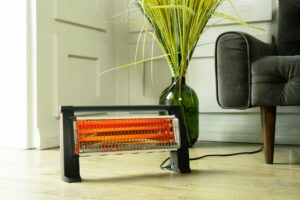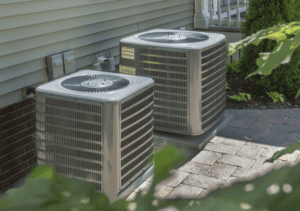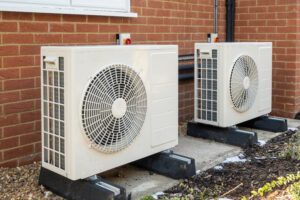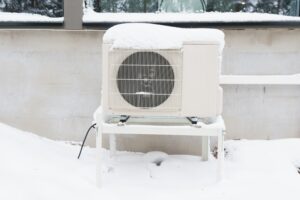Fall and winter tend to bring about dry air. As the air in your home dries out, you will notice changes, such as static electricity and dry, irritated throats. To keep your home comfortable and safe, it is important to understand humidity and how it should be set for these colder, drier months. Cates Heating and Cooling has advice for homeowners on how to add humidity to your home this winter.
What Should Indoor Humidity Be During the Winter?
Warm summer air can hold more moisture, which is why it is more humid in the summer. In the winter, the outside air dries out, which leads to a number of problems including static. To keep your home comfortable, you may need to increase the humidity level in your home to combat the dry air from outdoors.
According to the American Society of Heating, Refrigeration, and Air Conditioning Engineers, a relative humidity level anywhere between 30 and 60 percent is considered comfortable, and the recommended humidity level is between 45 to 55 percent. However, in the winter, you might need to keep the relative humidity under 40 percent in the winter to avoid condensation buildup on the windows inside of your home. At this level, the air is still moist enough to be comfortable during the harsh winter months.
What is relative humidity? To answer this, let’s look at the definitions of both absolute humidity and relative humidity. Absolute humidity measures the amount of moisture in the air no matter what the temperature of the air is, while relative humidity represents the amount of water vapor as a percentage of the total moisture that can be contained in the air at its current temperature. Relative humidity is a more accurate representation of both comfort and humidity in the air. For these reasons, we care more about the relative humidity when talking about indoor humidity.
Many factors affect the relative humidity levels in your home, including:
- Outdoor humidity levels
- Ventilation
- HVAC performance
- Use of appliances, baths, and showers
- Cooking
- Plants
Furnace humidifiers can help you regulate the humidity in your home. The humidifier is set up to run with your furnace to make sure that the air gets humidified before it is distributed throughout the duct system. With built-in humidifiers, you don’t have to worry about any dangers with hot steam like you would with a portable steam vaporizer. These devices make the air in your home more comfortable without changing the temperature in your home.
If you can safely use a portable seam humidifier in your home (keep in mind the dangers to both children and pets), then you can place them in rooms where you spend a lot of time, such as the bedrooms and living room. Adding live houseplants can also put more moisture in the air of your home.
Benefits to Proper Indoor Humidity in the Winter
Proper humidity levels in the home are directly tied to your health. If you have noticed dry, scratchy throats are common in your household, part of the problem could be that the air is too dry. Nosebleeds are also common for people living in homes with extremely dry air. Have you started to notice dry, cracked skin or chapped lips? Both of these are also due to low humidity problems. High humidity is a problem as well.
In fact, you are more likely to have dust mite infestations in your home if your humidity is too high. High humidity levels have also been tied to mold and mildew growth. If your indoor humidity levels are too high, you might notice an increase in problems with allergies and other respiratory issues.
You can tell that the humidity in your home is too low if:
- You start to experience a bloody nose
- Wood and furniture in your home starts to dry out and crack
- Static electricity becomes a problem in your home
- You have a dry, itchy throat
- Allergy and asthma problems arise
- You or someone in your family starts to experience cold and flu symptoms
- Skin and eyes become dry and itchy
- Electronics stop working properly
- Lips start to chap
Additionally, the flu virus is less effective in higher humidity levels. The lower the humidity level, the higher the infection rate of the virus becomes. So, if you keep your home at the right humidity level, you can keep the virus at bay in your home during the cold and flu season.
You can tell that the humidity in your home is too high if:
- You start to see condensation on your windows
- Water stains form
- You notice a “sticky” or “muggy” feeling
- Wallpaper starts to peel or paint starts to blister
- You or someone in your family starts to have allergic reactions to mold or dust mites
- Mold or mildew starts to grow in your home
- A musty odor is noticeable
- Wood floors start cupping
If you are having indoor humidity problems, call Cates Heating and Cooling today at 913-888-4470. One of our expert technicians can come to your home and determine the cause of your humidity problems. We can also help with installing a furnace humidifier to help keep your home more comfortable during the winter months.



















